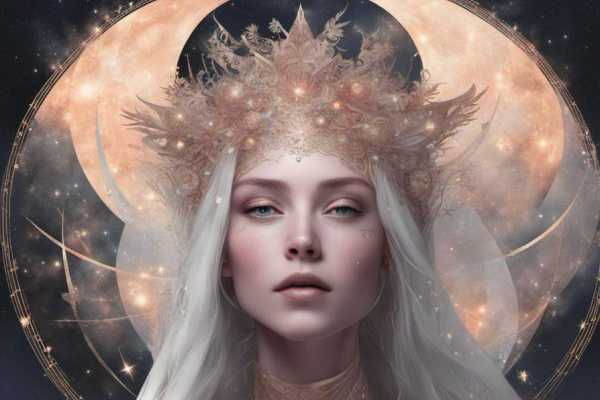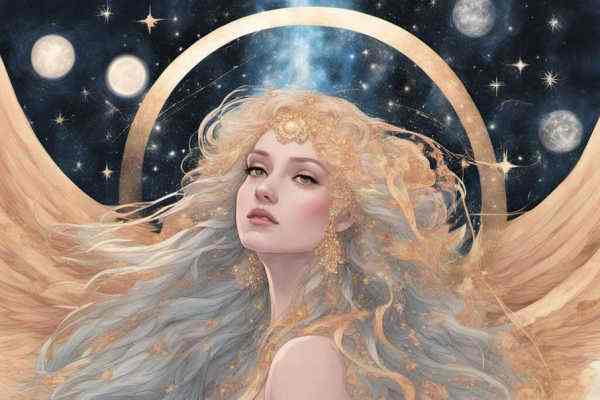Female archetypes were once valued on par with male archetypes. Nowadays, goddess archetype meanings and goddess myth stories have nearly vanished. This is detrimental to our culture because female archetypes are the basis of a just and fair society. We must revive a more balanced and fair approach to civilization.
An archetype is a typical example or pattern with common characteristics. The hero’s journey is an archetype for the spiritual quest. This archetype is found in many ancient traditions. Likewise, a heroine is a female hero who often represents the role model for the female archetype.
Female heroic archetypes are often divine figures with great strength and extraordinary abilities. These stories are not just for entertainment. They contain important lessons and insights. Let’s explore these divine feminine archetypes and see why they have lost favor.
Female Archetype Symbolism
The symbolism of the female archetypes is the higher moral values of the female gender. These are the intuitive, creative, nurturing, and protective qualities of feminine gender. These archetypes offer a way for all genders to connect with the power of the “divine feminine.”
A healthy culture reflects female symbolism in equal proportion to male symbolism. Female symbolism has a positive effect. It promotes empathic and holistic values of equality and equity. When a culture diminishes female archetype symbolism, other less altruistic values take control.
Female Heroic Journey Archetypes

Let’s begin by looking at the elements that deter the use of feminine archetypes and typologies. Understanding the archetypes of female symbolism is the key to holistic development. They give us a positive framework for self-understanding and personal growth.
Finding out why a culture undermines female archetypes is not straightforward. It weaves historical, sociopolitical, religious, and economic dimensions. Female heroic journey archetypes are absent from cultures that do not support equality. The following points outline various ways in which female archetypes are undermined:
1. Restrictive Legal Frameworks
Saudi Arabia is an example of a backward culture with a male guardianship system. For women to do many things requires permission. Their father, husband, brother, or son must grant them permission to go to travel, work, or even get medical treatment.
This backward traditional framework eliminates female autonomy. It establishes stereotypes of women as inferior, dependent, and subordinate. Women are regarded as property and have no legal rights. They have no autonomy for decisions on marriage, divorce, reproduction, and child custody. Women are second-class citizens lacking free will, agency, and personal power.
The United States is on a similar slippery slope, reducing the rights of women. Religious fundamentalism and right-wing conservatism are undermining the democratic process. This is evidenced by the overturning of women’s rights to an abortion under Roe Vs. Wade. Other reproductive rights are under attack. With each legal precedent, the rights of personal autonomy are eroded while the rights of corporations increase.
2. Cultural Norms and Social Expectations
Enforced gender segregation in public spaces and institutions reinforces male domination. It promotes the idea that women should occupy a narrow private, domestic sphere rather than a public one. This barrier effectively undermines the role of women as leaders or professionals.
Strict dress codes, such as the abaya and niqab, are ways to control women’s bodies and limit their public presence. It makes them socially invisible. The idea is to emphasize modesty and submission over individuality and expression. Backward societies diminish the heroic journey archetypes of women as much as possible to maintain control. They place blame on women for triggering the sexual urges of men.
3. Religious Interpretations of Goddess Archetype Meanings
Holy texts are used to justify gender inequality, prejudice, and discrimination. These texts portray women in domestic subservient roles. Religious indoctrination strengthens traditional and subservient female archetypes. Male religious authorities often control the interpretation and dissemination of religious teachings. This reinforces patriarchal archetypes and marginalizes more progressive views on gender equality.
Goddess myth stories are not welcome in the monotheistic framework that emphasizes patriarchy. For example, Islam prohibits the worship of anyone or anything other than Allah. However, pre-Islamic Arabian traditions show how women were part of a more holistic and balanced society. One does not need a time machine to go back far. Iran and Iraq were thriving modern societies in the 1950s before Islamic fundamentalists took control.
This kind of subjugation is seen in all the Abrahamic faiths, where patriarchy has control. The Catholic Church, which is based on divine feminine archetypes like Eve and Mary Magdelene, also downplays the role of women. Female archetype symbolism is not welcome in a world dominated by men.
4. Economic and Educational Barriers
Until recently, women in Saudi Arabia were largely excluded from many sectors of the workforce. Limited access to economic opportunities reinforces stereotypes of women as inferior. Although there have been significant improvements in female education, disparities still exist.
The economic hierarchy of male preference amounts to a subtle form of oppression. Women are historically paid less for doing the same job as male peers. Prejudice still keeps women from some occupations, sports, and educational institutions. Even when women have their own sports leagues, they receive less monetary support than comparable male leagues.
5. Political Exclusion
Women have historically been left out of the political process. Women have had to fight in order to vote and overcome the stereotype that men are superior to women in leadership roles. There has been some progress in including women in political roles around the world. However, the Shura Council in Saudi Arabia is an example of a position that is for show and lacks actual power.
6. Media and Representation of Divine Feminine Archetypes
The media in many cultures have traditionally portrayed women in domestic roles. They reinforce the stereotype of women as passive figures or even as idiots, such as the TV show All in the Family. This stereotype perpetuates narrow and often subservient archetypes of femininity. Some cultures, like Saudi Arabia, prohibit the portal of empowering female archetype symbolism.
7. Socialization and Education
Men often create educational curriculums. So, they naturally emphasize traditional gender roles and downplay the achievements of women. Educational models are often shaped to skew perceptions and reinforce stereotypes from an early age. Heroic journey archetypes emphasize patriarchal and male stereotypes. This preference minimizes feminine and goddess archetype meanings in the culture. Social norms and pressures discourage women from pursuing non-traditional roles.
The Importance of Goddess Myth Stories in Culture
Female archetypes often embody moral and spiritual lessons. For example, the Virgin Mary in Christianity symbolizes purity and maternal compassion. She guides moral behavior and offers spiritual solace.
Female archetype symbolism, like the Female Warrior, inspires empowerment and self-assertion. This archetype challenges traditional roles and encourages personal and social transformation. Figures such as Wonder Woman or historical figures like Joan of Arc embody this archetype.
Divine feminine archetypes are more than stereotypes. They are the blueprint for our cultural values. These archetypes can be emphasized or diminished. Those in charge of the cultural narrative decide what is important.
They can affect the instinctual aspects of the human psyche. Each culture defines the parameters of how these instinctual aspects may operate. It involves defining acceptable gender roles, clothing, and communication styles. This cultural condition affects the psychic structures of the mind, which help us determine right and wrong. It can also establish unhealthy bias and prejudice, which are the basis for all sectarian ideologies.
Female archetypes mirror societal views on femininity and gender roles. In healthy cultures, these develop alongside other cultural changes. For instance, today, we see the shifting portrayal of women in media. There is a greater capacity that accept more autonomy and individuality. Literature reflects broader societal views on gender equality and women’s rights. Let’s look more closely at these archetypes.
The Divine Feminine Archetypes
Read the archetypes below for those you identify with and those you do not. You may need more of both in your life.
1. We start with Amaterasu, the sun goddess of Japanese tradition. She acts as the guiding light that brings out the positive sides of this world. Her stories talk about rebirth and the importance of inner light and wisdom.
2. Athena is the Greek goddess of wisdom and warfare. Her goddess myth stories are among the most famous. She represents intelligence, critical thinking, and courage. Among divine feminine archetypes, she prompts fear for those with prejudiced worldviews. Followers of conservative religious and right-wing political ideologies detest the archetype. Powerful women archetypes work against their control.
3. In Hindu mythology, Durga is a warrior goddess who wages war against evil forces and destroys barriers. She epitomized protection, strength, and righteous anger in her pursuit of justice. Many people worldwide use her one-word mantra, “Durga.
4. Freyja is the Norse goddess of love and fertility. She is renowned for her beauty and passion but is also connected with war and death. She represents both creative and destructive aspects of nature.
5. Inanna is a central figure in Sumerian mythology. She embarked on a daring journey to the underworld, confronting evil head-on. This adventure symbolizes the universal themes of mortality and renewal. She showcases the unwavering spirit to overcome challenges and emerge victorious.
6. In Egyptian mythology, we have the goddess Isis. She is a powerful mother and guardian figure. She embodies the essence of motherhood with remarkable healing abilities that inspire awe.
7. Now, let’s talk about Kali, a Hindu goddess who may appear frightening at first glance. She represents the forces of destruction and transformation. Although she may seem intimidating, Kali teaches us the vital lesson that change is an inherent part of our existence.
8. Shifting our focus to Chinese mythology, we encounter Kuan Yin, the revered goddess of mercy. She is known for her compassion and kindness. Her stories enlighten us about the significance of empathy and a gentle heart.
9. In Hindu mythology, Lakshmi is the goddess of wealth and prosperity. She brings abundance and good fortune to those who revere her.
10. Within Christian stories, Mary Magdalene is a symbol of compassion and redemption. She is about leaving the past behind and finding a fresh path in life.
11. Morrigan is the Celtic goddess of war and destiny. She’s all about prophecy and sovereignty. Basically, she represents the fierce and protective qualities of femininity. It’s her way of showing that women can be powerful and fierce.
12. In Yoruba mythology, Oshun is the goddess of rivers and love. She’s all about beauty, fertility and the sweet things in life. Oshun reminds us of the importance of loving ourselves and being compassionate.
13. We must not forget Pele, the Hawaiian goddess of fire and volcanoes. She symbolizes both creation and destruction. Her stories teach us to respect the power of nature and the intensity of passion.
14. Last but not least, we have Saraswati, the Hindu goddess of knowledge and arts. She’s all about learning, creativity, and wisdom, reminding us of the importance of education and the pursuit of truth.
Conclusion of Goddess Myth Stories
Female archetype symbolism is the basis of many ancient cultures. Goddess archetype meanings speak to our shared human experiences. Like many stories, the female deity archetype began as an oral tradition. They were a way to communicate truths about our nature. As a modern society, we are battling to recover the balance these archetypes bring.
